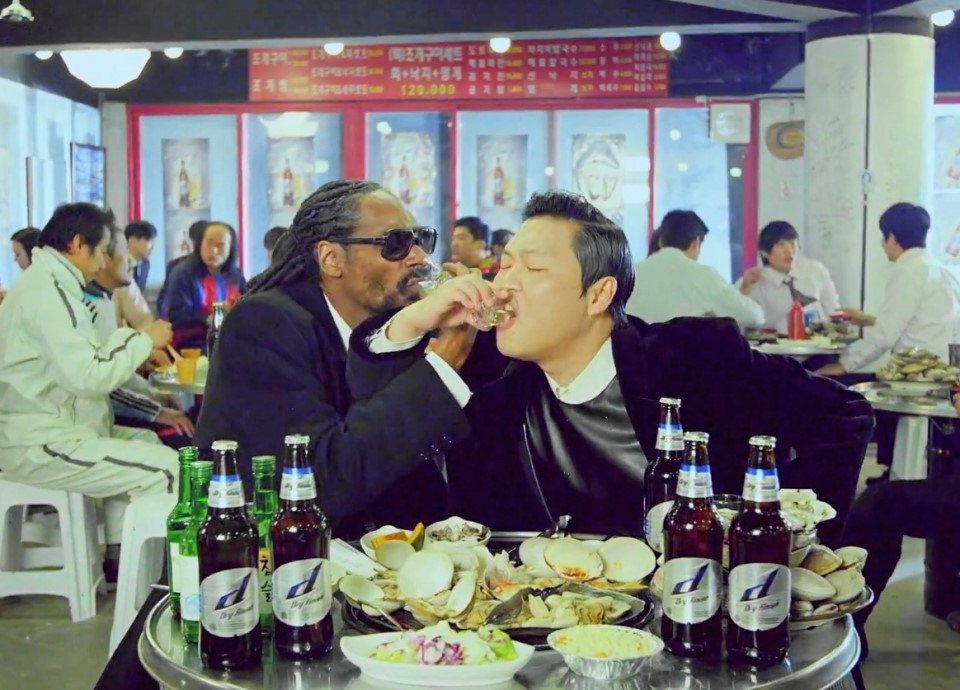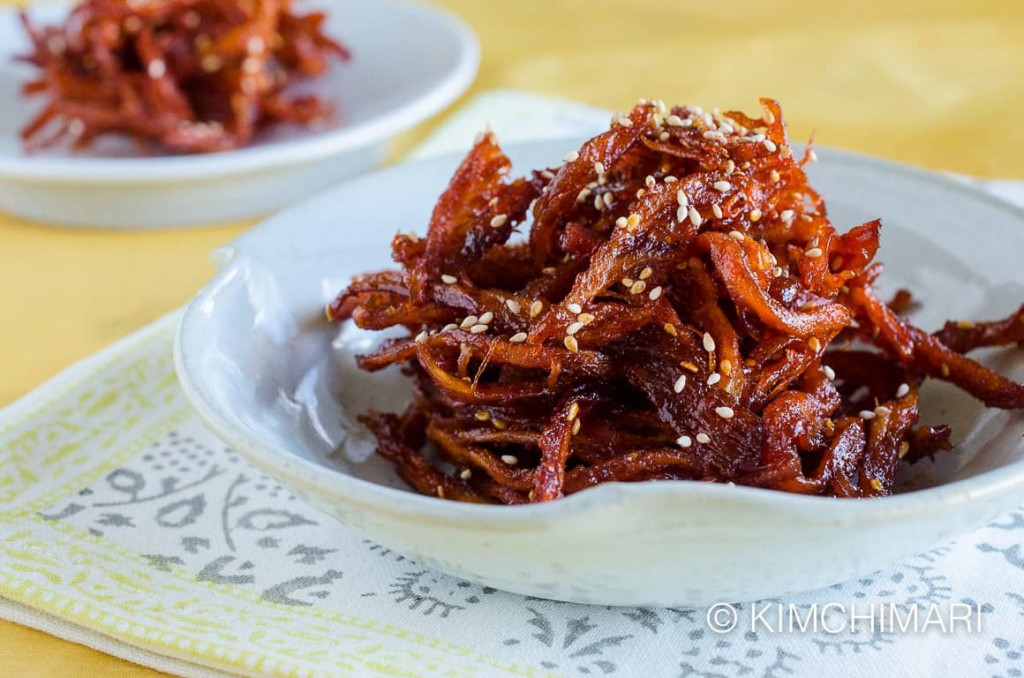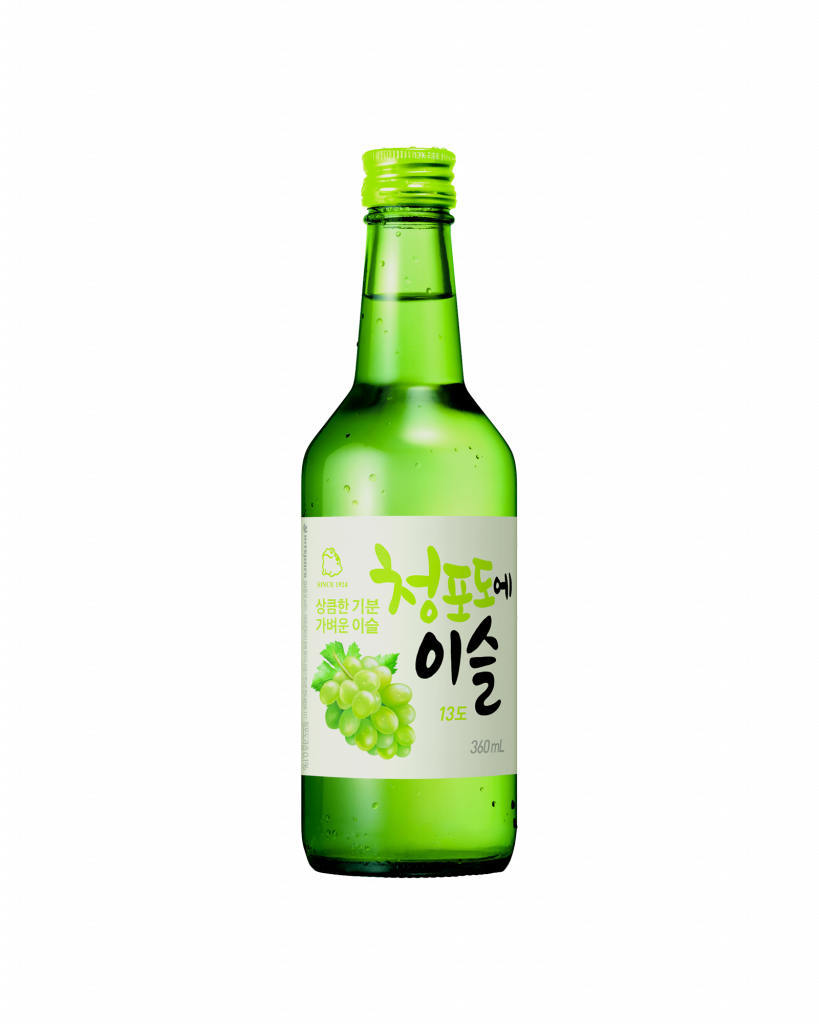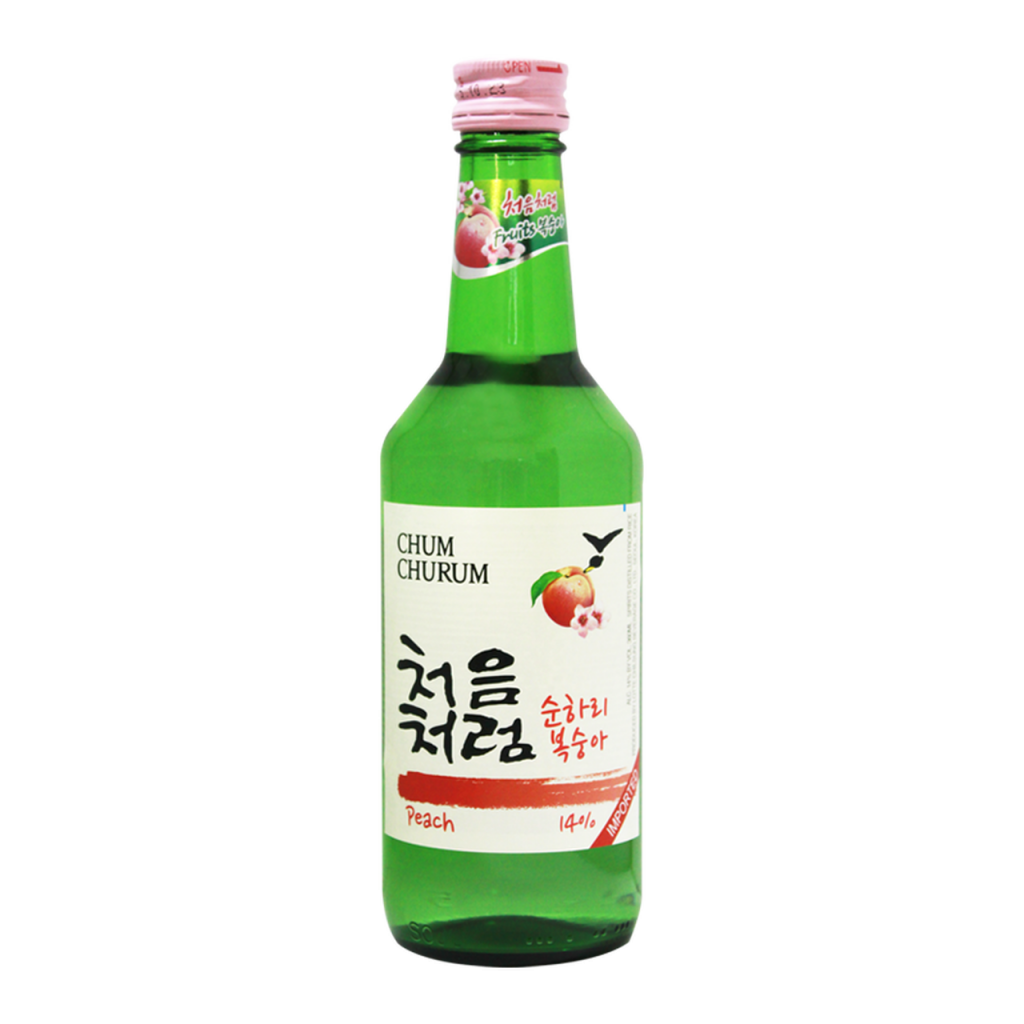When thinking of soju, one automatically thinks of Korea.
Understandably, soju is a part of Korean culture and it is only fun when drinking with others.
Notably, this drink comes in over 20-different flavors, so there is much to taste.
Soju is a clear and colorless alcoholic drink. And interestingly, much say soju is similar to vodka.
To this day, this drink is continuing to gain popularity and is now spreading to the west.
Origins of Soju
To start, soju did not start with the Koreans.
Insane right?
Furthermore, this alcoholic drink was originally made in Arabia and it is known as arak.

During the war in the early Goryeo Dynasty, Mongol invaders brought arak to the war and it spread all over Korea.
Likewise, many say the reason why the Mongols knew about arak first because of Genghis Kahn.
The short story goes that Genghis Kahn brought arak to Mongolia first, then to his grandson, Kublai Khan.
Kublai Khan, for those who do not know, was the first emperor of the Yuan Dynasty and was one of Korea’s earliest leaders.
The Making of Soju
To start, traditional soju is made with rice, but it can also be from sweet potato, barley, tapioca, and wheat.
The making of this drink is a long process.
To make this Korean alcoholic drink, the rice has to be mash and pulverize into small pieces.
The small pieces are then mixed with water and made into a flat disk with pressure on the top—similar to tofu.

Now it is time to ferment. The disk will fermentation for three weeks.
But once the disk is hard as a rock, it is ready.
This is a step where using a mortar helps to pulverize the disk.
After the pulverization, the grain is will be mix with a big batch completely cool steam-white rice.
Then, the mixture is ready to ferment for another 2 weeks in Earthenware pots.
Finally, after the 2-month process, the mixture can be put into a Sojugori to boil.

Making soju a long process, and takes about 2 months.
What You Should Know About Soju
On the alcohol level, soju is between liquor and wine. This can be dangerous for newcomers, for the alcohol percentage does not match with the taste.

The lowest ABV (alcohol per volume) stands at about 13% and 45% highest for the standard green bottles.
Now, the lowest percentage is from bottles with fruit flavors and the highest percentage is from the rich strong ones that taste like vodka.
Taste
This is why soju can be dangerous.
When drinking a bottle with a high percentage of ABV, you would expect to have a bitter and strong taste.

Not with soju, even the rich-flavor taste with a high percentage is so smooth that you can finish a whole bottle and without realizing it.
And on the other hand, you have fruit flavor soju which can taste the actual juice. The sweet smooth taste can only be an encouragement to continue drinking until becoming completely wasted.
Why Do People Like It?
Well, soju is similar to Japanese sake and vodka, but it is completely different at the same time.

You see the taste can be clean and neutral, or semi-sweet. But it does not burn or hurt like vodka, nor is it weak like sake.
This drink is steadily coming into the west, but initially many Americans were not fond of this Korean vodka because of its taste.
However, this is changing.

As Korean music, food, and shows are becoming more popular in the U.S, so is soju.
Soju Brands
With this drink, you can make many delicious cocktails and it pairs well with food. Since there are many types of soju, there are top brands to drink from.

The best selling brand that you can find at any Korean restaurant, store, the market is Chamisul by Hite Jinro. Not only does this brand ship all over Korea, but worldwide. Furthermore, the ABV ranges from 19% to 25%.

Another brand is Chum Chumrum. This brand is known for being soft, and best for bigger drinkers. This brand is well advertised by Korean celebrities. Also, the alcohol percentage ranges from 18% to 19%.

Finally, the most expensive brand is Andong. Andong can start at 40 to 50 dollars a bottle. As a result, this drink is most popular among the older generation. The drink is very strong but has a silky texture. The alcohol percentage ranges from 22% to 45%.
Believe it or not, the price of soju is insanely cheap, well in Korea. In Korea, the average cost of the green bottle is at about $2.80. On the contrary to the U.S, where each bottle sells for $6 to $7.
Ethics to Drinking
If not obvious, the right way to drink soju is cold in small-shot glasses.
However, drinking ethics goes far beyond cold soju.
Some customs include whipping the bottle side-to-side and hitting the bottom of the bottle and then opening it.
But, there are some rules:

1. In a group of people, you never pour your glass. The eldest of the group gets their glass poured first.
2. When pouring or receiving the alcohol, you hold the cup or the bottle with both hands.

3. Now if you are the one pouring, cover the label with one of your hands.
4. Do not drink visibly. Meaning, turn your back and cover your drink with one hand while drinking. This is to show respect to the elders in the table.
On rare occasions, a bottle of soju is left. Once the bottle is open, someone will finish it.
However, these rules can change depending on the people you are drinking with. If you are drinking with friends, you can drink and pour with one hand.
Soju Food Pairing
Soju pairs well with meats and salty food. This is also known as Anju, which is food that tastes good with alcohol.

For that reason, samgyupsal, grill pork belly, is very good with soju. The juice and savory taste pairs well with the bitter taste of the drink. Also, the greasy of the meat slows down the absorption of alcohol.

To cleanse your palette, shredded dried squid is good. This snack not only cleanses your palette the saltiness, give soju another flavor.

Another good one is Jokbal. This boiled, well-flavor meat melts on your tongue when eating. And removes the bitter taste of the soju.
As you might have realized, soju is a part of the Korean culture.
Fun fact, in Korea, business discussions happen over alcohol. And not in the office, like your regular scenario. Besides building trust, it is their way of learning more about you. This is how deals are mainly closed, and you can face penalization in the deal if you do not drink.
Fun Soju Drinking Games
With the drinking culture, it is obvious that games will be created.
These games are best with a group of friends.
Here are a few:

- Titanic or The Submarine is a game that requires a long glass cup, soju-shot glass, beer, and soju.
- First fill-up the long glass halfway with beer.
- Carefully drop the shot glass into the beer, and make sure no beer falls into the glass.
- Now, take turns filling the shot glass with soju. It does not matter how much, but the glass has to float.
- If the glass sinks, you drink the whole drink.
- Sam-yuk-gu (also known as 3-6-9) is a popular game amongst Koreans. Now, this game requires lots of clapping and shouting.
- In a group of people, being counting up. The trick is to once clap on numbers like 3-6-9. For instance, 1-2-clap-4-5-clap-7-8-clap.
- Now when you get to 30 you clap once, but for 33, 36, 39 you clap twice.
- If you end up saying the number or miss the claps, you drink.

- Another game is flicking the bottle cap with the loose metal end. This game just requires a soju’s bottle cap.
- Straighten the loose end of the bottle cap. Make sure that it is still attached to the cap.
- The rule to continue flicking the loose end until it falls off. The one who breaks the end wins and the other members drink.
Soju Cocktails and Mixture
Due to the smooth, and sweet taste of soju. The drink goes well in many cocktails.
Here are easy to make mixes:

In the Korean Yogurt Soju Cocktail, all you need is to mix rich-soju, sprite/7-up, and thaw Yakult.
- Use three ounces of each drink. A trick is to use the empty Yakult bottle for measurement. The sweet taste of yogurt masks the alcohol, and it is very refreshing

If you like slushy, you will enjoy a Watermelon-soju cocktail. Before making this one all ingredients should be cold: rich-soju bottle, small watermelon, and a cup of ice cubes.
- Cut the top of the watermelon and empty it, but do not throw away the skin because it can be a bowl.
- In a blender, put in the bottle of soju, watermelon chunks, and ice cubes.
- Once it is all blend together, pour it into the watermelon skin/bowl, and enjoy it.

Now, Melona-ju requires a Melona ice cream bar, a shot of soju, 1/2 cup of Chilsung Cider, and 1/4 cup of ice.
- Simply put all these ingredients in a blender, and enjoy with a straw.
Best Selling and Interesting Sojus
Soju comes in many variations of flavors. Here are some of the best selling in Korea:
- Green Grape
- Peach
- Apple
- Pineapple
- Grapefruit
Honorable mentions:
- Yogurt
- Cherry
- Lychee
- Ginger
- Mango
Which soju flavor is your favorite?
For more blogs like this:
To learn more on Korean food, watch the video below!
[embedyt] https://www.youtube.com/watch?v=Xn_MwXv3MDw[/embedyt]














